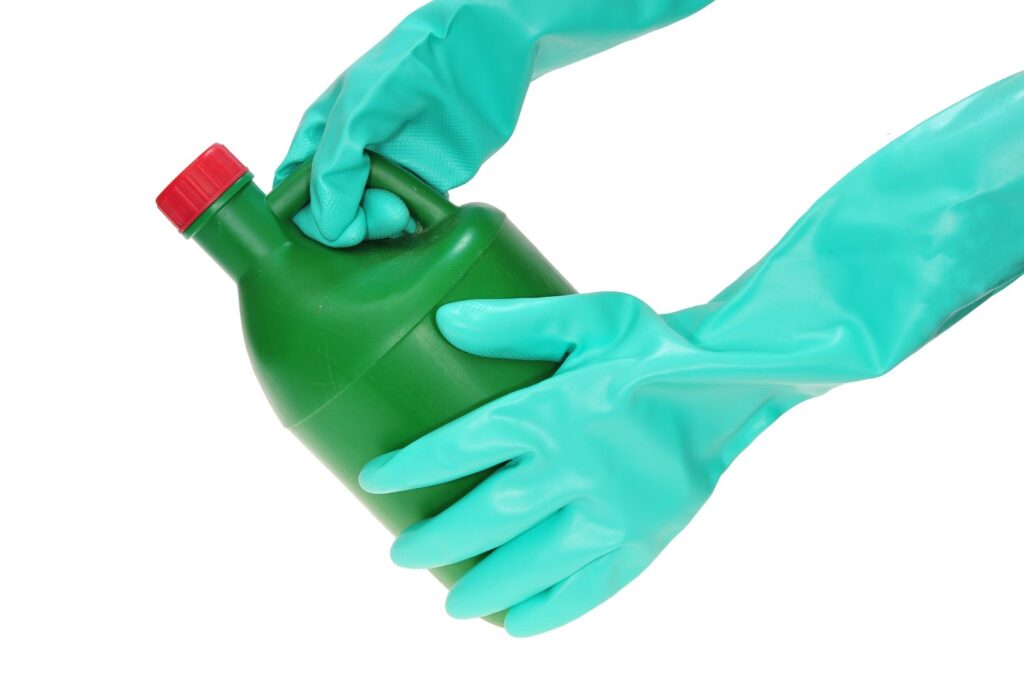Keep Your Child Safe from Industrial Cleaning Chemicals

Everyone wants a clean home interior.
But then time happens — dirt and debris get tracked into the home, and if you have a pet, that’s even more dander and small particles restlessly floating around your house. It can be enough to drive anyone mad!
Any kind of traffic drags in different kinds of dirt, as well as germs and unsanitary substances – so cleaning is a must. However, some significant hazards lurk in the industrial cleaning chemicals that are in the most popular cleaning products. These are things that you should know about as you go to the store to get what you need for cleaning.
Best Ways to Keep Your Child Safe from Industrial Cleaning Chemicals
Here’s how to make your home safe and clean without resorting to toxic chemicals that can harm your indoor air quality and cause health risks.
Use Manufacturer Suggested Floor Cleaning Products
Most manufacturers will put key health information on their product packaging. Many of them related to industrial cleaning chemicals are required by the authorities that regulate the sale of these products.
So when you see a certain manufacturer-recommended product and it says it’s free of certain specific chemicals, that’s a good place to start in making your cleaning cabinet less of a toxic hazard for your family.
Avoid the Use of Toxic Cleaning Chemicals: Check the Label
Check the label and look for these lurking toxins, these industrial cleaning chemicals in your cleaning products:
- Ammonia
- Chlorine
- Phthalates
- Triclosan
The first two industrial cleaning chemicals are essentially more natural, with legitimate uses in some products, but they are both harsh when encountered in more concentrated forms. For example, a tiny trace of chlorine in water is different from a high dose in a spray bottle released to clean a surface.
In industrial cleaning products, phthalates and triclosan have their hazards, as well. Triclosan is an antibacterial that has some nasty side effects: and you could just as easily be using natural antibacterials like vinegar. Phthalates, as industrial cleaning chemicals, are put into synthetic fragrances, which can be irritating and include some noted carcinogen risks.
Use Green Cleaning Products
In all of the options that you have when browsing the cleaning aisle, you can choose from some green products that do the job quite nicely.
What you’ll see, in general, is that they use a range of natural materials that are known as astringents, antibacterial, and antimicrobial ingredients.
One of the most common is vinegar — which has a whole wide range of cleaning uses. Citric acid is often used for a fresh smell. Essential oils like tea tree oil and peppermint oil may also be in the mix.
Many of these green products will be transparent about their formulations and design, and how they can make your cleaning cabinet a safer place to be, unlike some industrial cleaning chemicals.
Carpet Stain Removers Can Be Toxic
In addition to all of the nasty toxins that you have to watch out for in your full range of cleaning products, carpet stain removers have some particular substances that you want to avoid.
One of these industrial cleaning chemicals is naphthalene, which interferes with your body’s natural processes in a fairly scary way.
Naphthalene interferes with the ability of red blood cells to carry oxygen, which, as chemical users are forced to point out, can cause organ damage.
There’s also something called perchloroethylene that is used in degreasing and dry cleaning and it’s so dangerous that national Australian authorities are looking at it quite closely, as evidenced by this internal resource.
So what’s the solution? Hydrogen peroxide provides a neat alternative, and a combination of vinegar and baking powder often does the trick as well.
The Safest Chemical to Clean with Is Water
When you want the absolute safest cleaner you can get (instead of industrial cleaning chemicals), it has a very natural chemical equation — H2O.
We know it as the life-giving elixir that it is, and it’s a commodity that comes right out of your tap.
It might take a little more work, or a little more time, but cleaning with water can be effective in a wide range of situations where people get lazy and use toxic chemicals instead.
Using Elbow Grease Can Help Remove Dirt and Germs
As mentioned, when cleaning with water and other natural ingredients, you may need a little more arm strength.
Without the dissolving power of some of the more extreme caustic chemicals and industrial cleaning chemicals in the average person’s cleaning cabinet, it will take a little more scrubbing to get dirt and germs out of crevices and off of surfaces. But that work will be well worth it in the end!
Change Mop Heads Frequently to Prevent Spreading Germs Around
The same goes for sponges and brushes, too. Changing these cleaning carriers helps to avoid situations where dangerous bacteria build upon their surfaces.
Conclusion
With attention to the above points, you can get safer materials for cleaning your home to a brilliant, sanitary shine. Get all of the cleanliness without the toxicity, and enjoy a more natural, safer environment within your home. How do you want to perfect your home cleaning routine? Contact us for more information.
